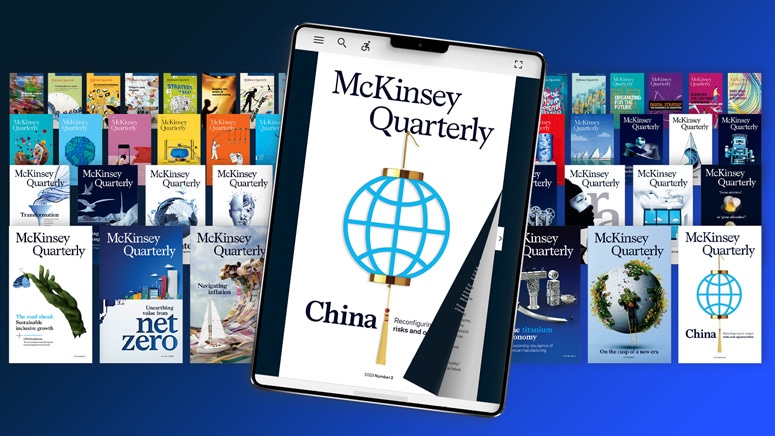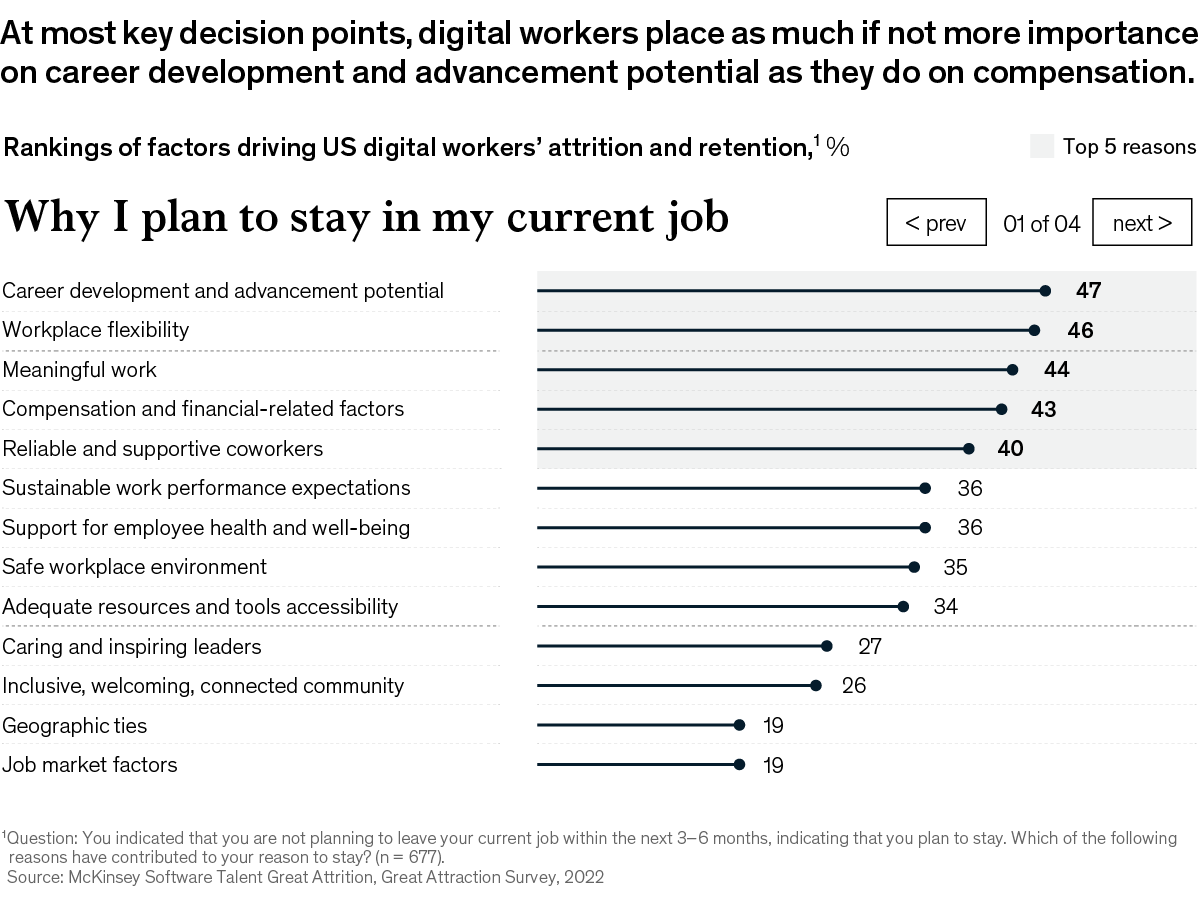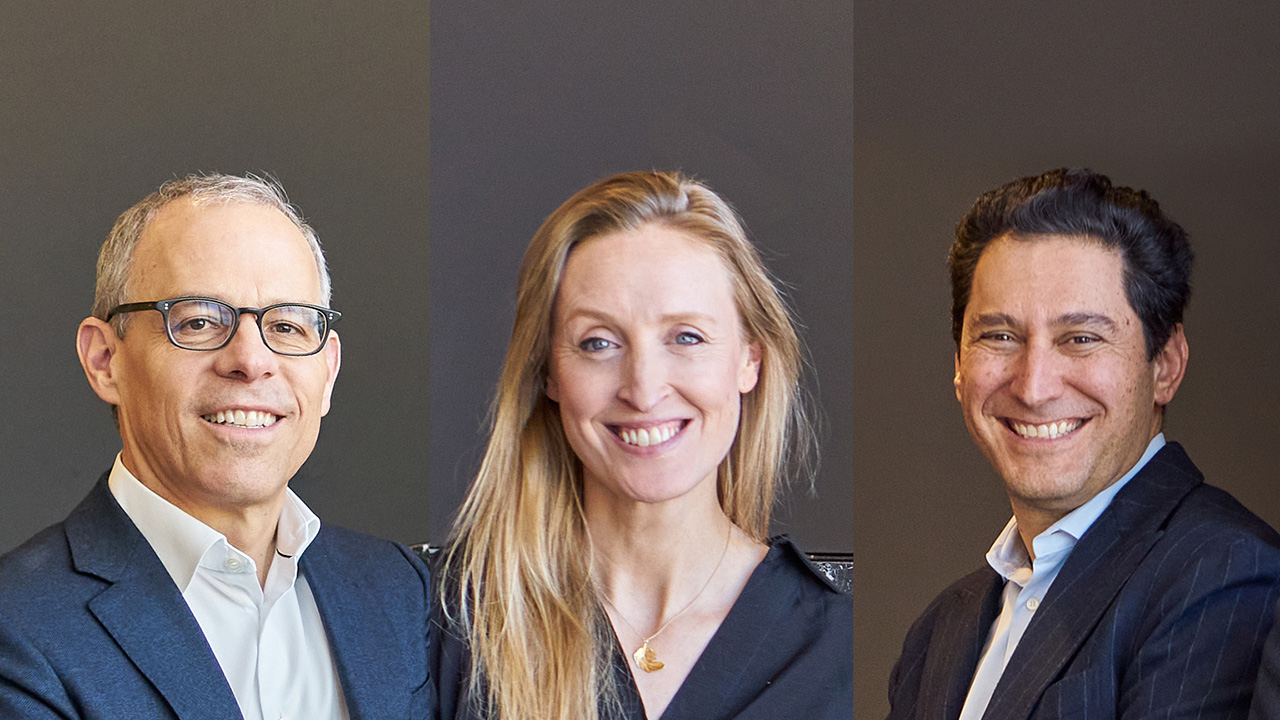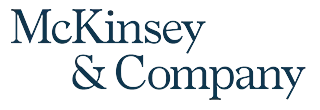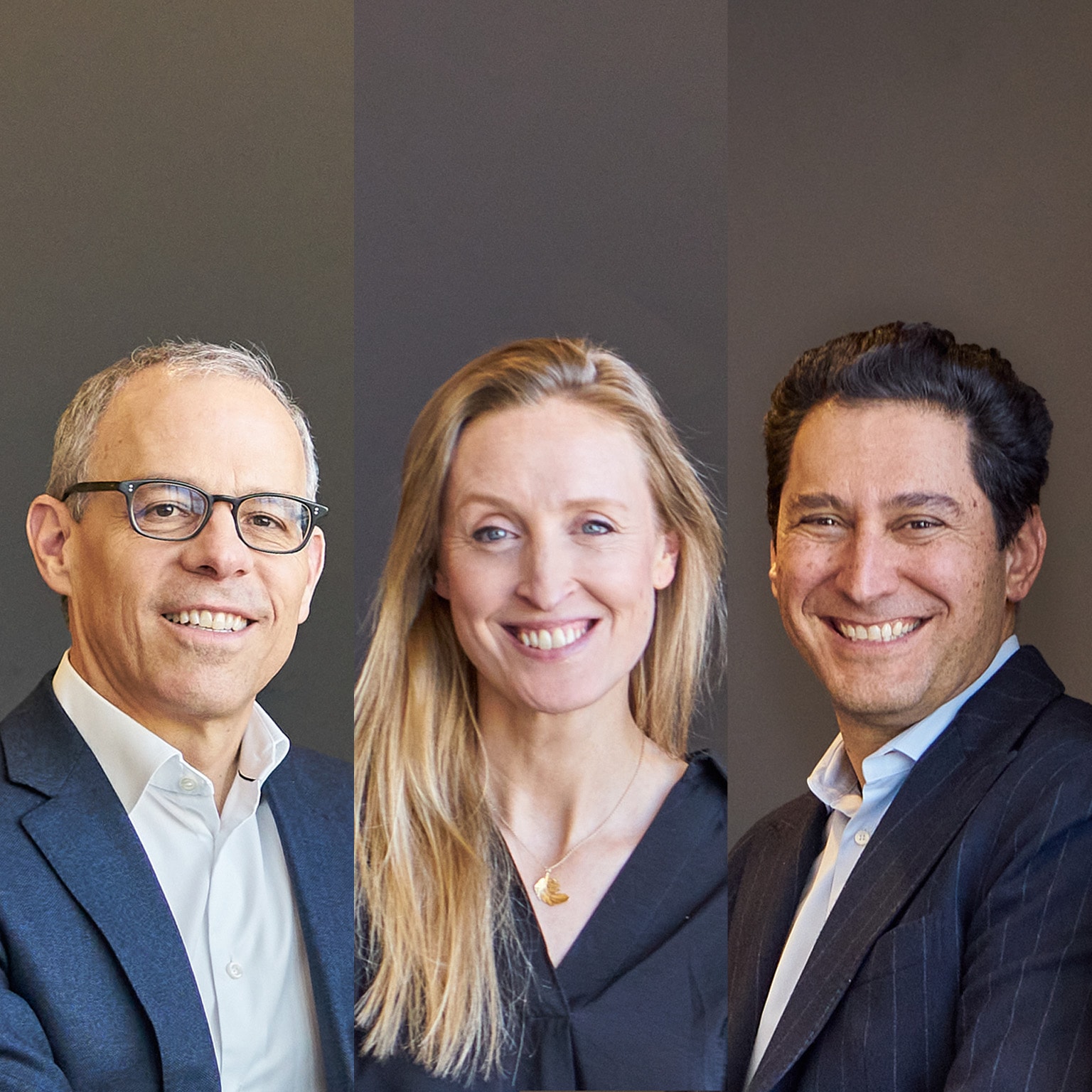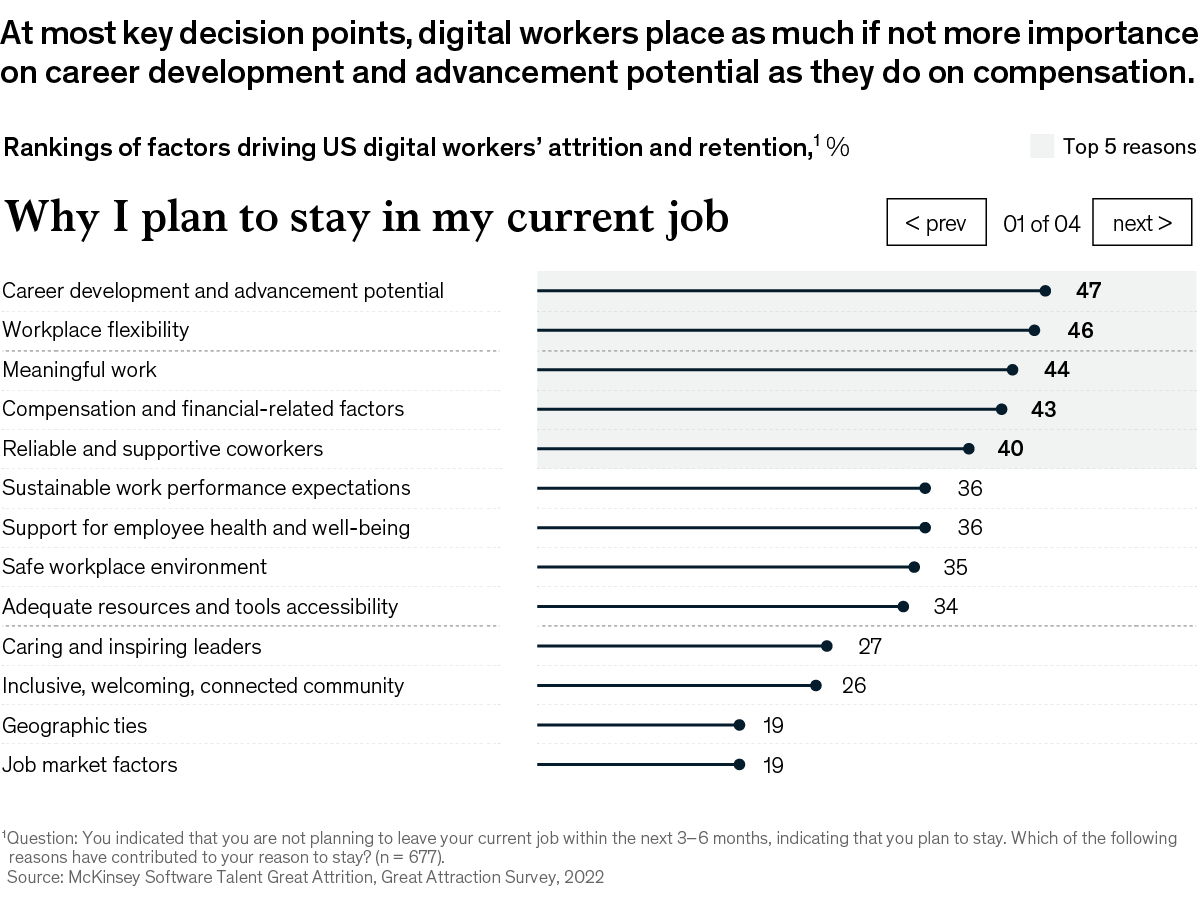Archives
- By thread 5349
-
By date
- June 2021 10
- July 2021 6
- August 2021 20
- September 2021 21
- October 2021 48
- November 2021 40
- December 2021 23
- January 2022 46
- February 2022 80
- March 2022 109
- April 2022 100
- May 2022 97
- June 2022 105
- July 2022 82
- August 2022 95
- September 2022 103
- October 2022 117
- November 2022 115
- December 2022 102
- January 2023 88
- February 2023 90
- March 2023 116
- April 2023 97
- May 2023 159
- June 2023 145
- July 2023 120
- August 2023 90
- September 2023 102
- October 2023 106
- November 2023 100
- December 2023 74
- January 2024 75
- February 2024 75
- March 2024 78
- April 2024 74
- May 2024 108
- June 2024 98
- July 2024 116
- August 2024 134
- September 2024 130
- October 2024 141
- November 2024 171
- December 2024 115
- January 2025 216
- February 2025 140
- March 2025 220
- April 2025 233
- May 2025 239
- June 2025 303
- July 2025 162
-
A Versatile Driving Behavior Software used across Industries to Monitor Driving Behavior in Real-Time
A Versatile Driving Behavior Software used across Industries to Monitor Driving Behavior in Real-Time
Enhance safety, and improve operational efficiency across various industries.Enhance safety, improve operational efficiency across various industries.
Use Cases Across Industries
School Bus Management
School bus managers have no way of monitoring how their drivers are performing on the road. There is a risk that drivers engage in unsafe driving behaviors, such as speeding, harsh braking, or rapid acceleration, which could put the safety of students at risk.

Hazardous Chemical Transport
Safely transporting hazardous chemicals while complying with strict safety regulations is challenging. Ensure safety through real-time monitoring of driving parameters, including speed, acceleration, braking, and cornering, with alerts for rough driving and non-compliance.
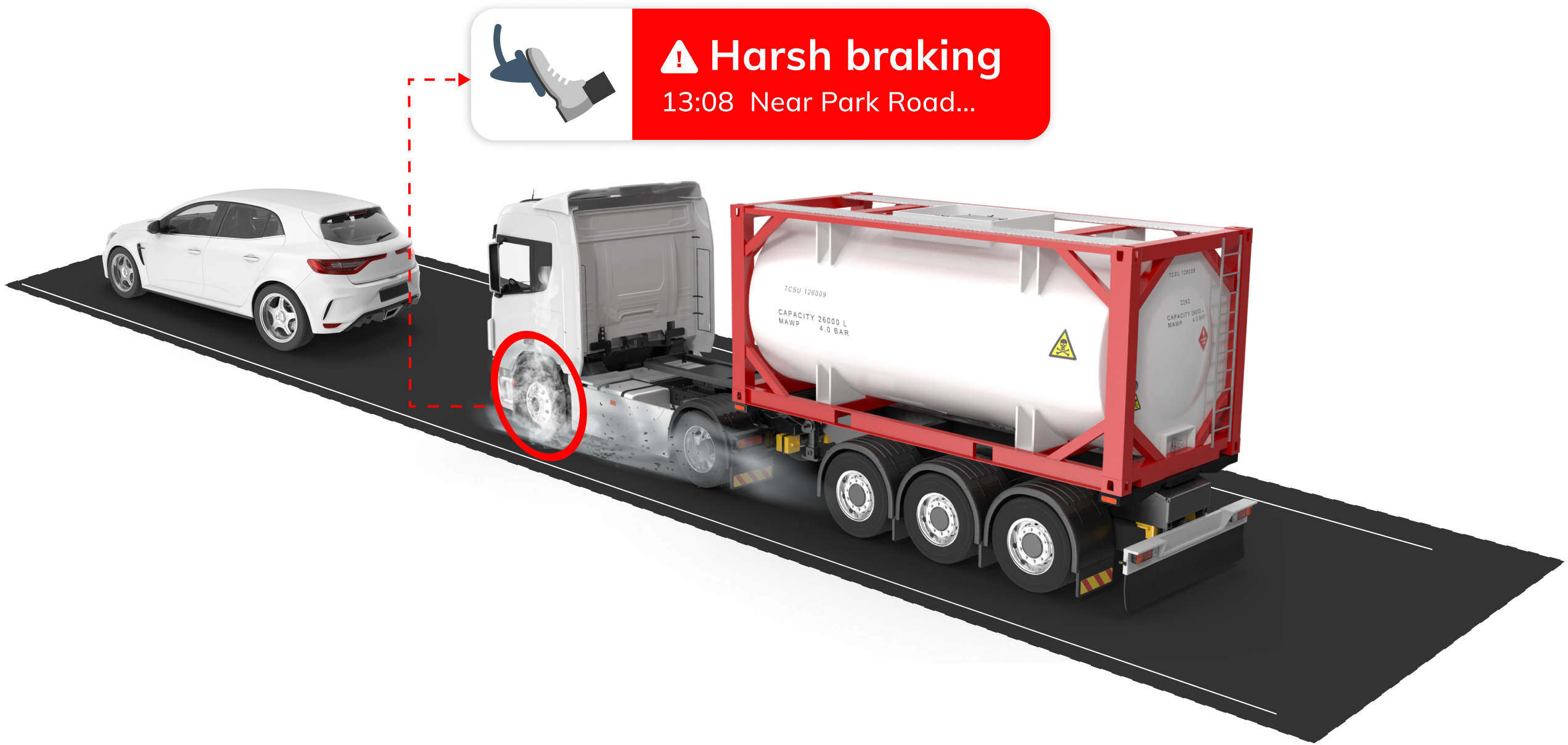
EmployeeTransport
A company providing transportation services for their employees was facing issues with drivers engaging in risky driving behaviors. This led to an increase in accidents and injuries, compromising employee safety and negatively impacting the company's reputation and revenue.
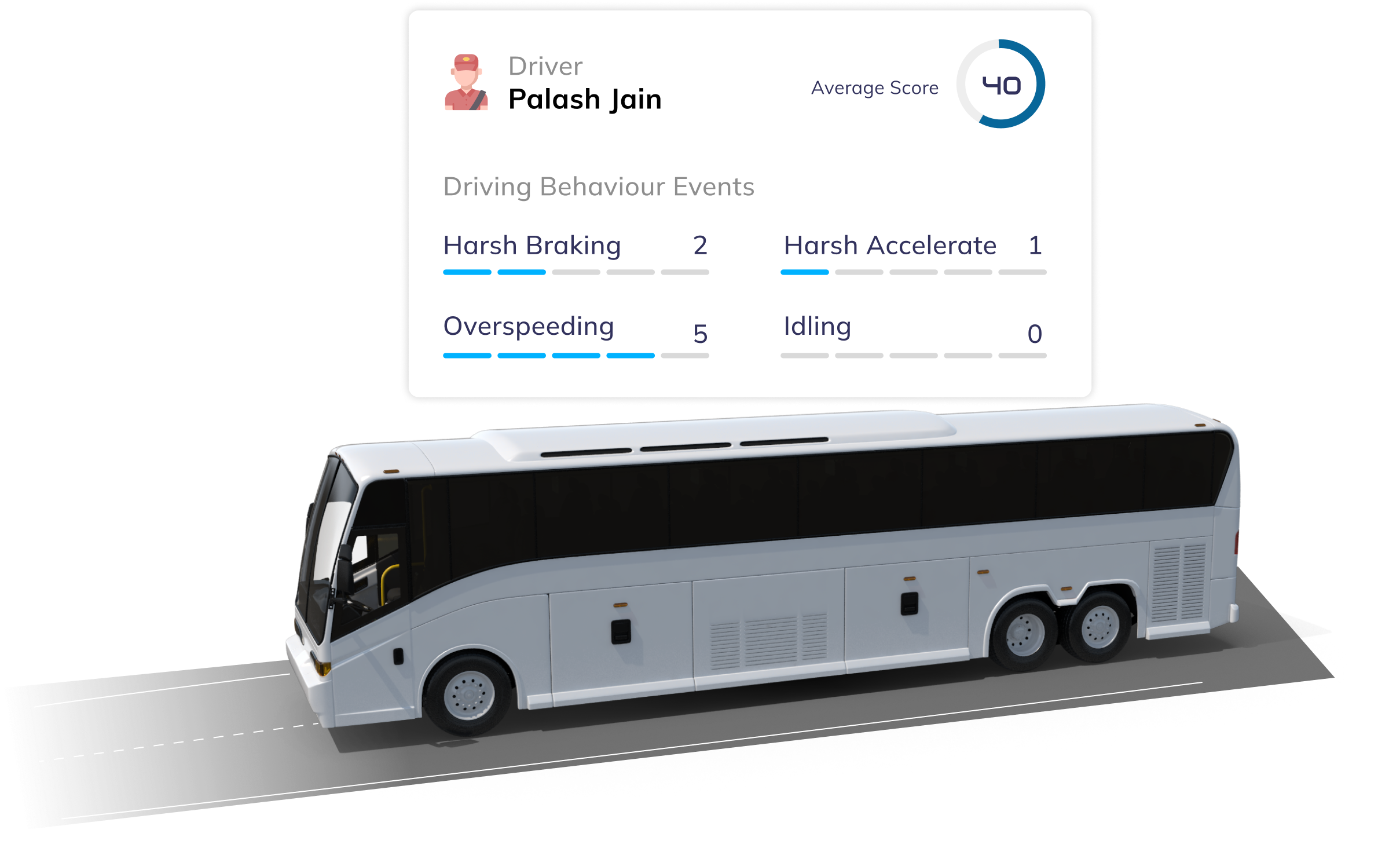
Discuss your use-case to get your business growing
Uffizio Technologies Pvt. Ltd., 4th Floor, Metropolis, Opp. S.T Workshop, Valsad, Gujarat, 396001, India
by "Sunny Thakur" <sunny.thakur@uffizio.com> - 12:30 - 30 May 2023 -
Your website
Hi, I was checking your website and I can see it’s not ranking on Google and other major search engines. I’m an SEO provider and have helped over many USA businesses rank on the 1st Page of Google. My rates are very affordable. Let me know what you think. Kind Regards Sasha Walker ___________________________________________________ If you are not interested, kindly respond with "NO"
by "Sasha Walker" <info@salestudio.com> - 06:23 - 29 May 2023 -
How to ace every stage of the CEO journey
Step up, start strong, stay ahead Brought to you by Liz Hilton Segel, chief client officer and managing partner, global industry practices, & Homayoun Hatami, managing partner, global client capabilities
New from McKinsey & Company
The CEO journey is not an easy one. From the ascent to CEO, to the first six to 12 months of tenure, to the middle years of the role, each phase comes with its own set of challenges, ambitions, and lessons. Explore this series of McKinsey Quarterly articles from senior partners Carolyn Dewar, Scott Keller, Vikram Malhotra, and Kurt Strovink for high-impact leadership advice for different stages of the CEO lifecycle. Then dive into lessons from the world’s best CEOs, and learn how leaders can begin leaning forward to find new opportunities amid ongoing turbulence and change.
THE CEO JOURNEY
ACHIEVING CEO EXCELLENCE
ON THE CEO AGENDA
To see more essential reading on topics that matter, visit McKinsey Themes.
— Edited by Eleni Kostopoulos, managing editor, New York
Share these insights
This email contains information about McKinsey’s research, insights, services, or events. By opening our emails or clicking on links, you agree to our use of cookies and web tracking technology. For more information on how we use and protect your information, please review our privacy policy.
You received this email because you subscribed to our McKinsey Quarterly alert list.
Copyright © 2023 | McKinsey & Company, 3 World Trade Center, 175 Greenwich Street, New York, NY 10007
by "McKinsey & Company" <publishing@email.mckinsey.com> - 12:09 - 29 May 2023 -
How the US can capture a $10 trillion opportunity by rekindling productivity growth
Get back on track
by "McKinsey & Company" <publishing@email.mckinsey.com> - 10:49 - 29 May 2023 -
Reminder: Save your spot today for “The global HR stack to power fast and compliant expansion” on June 6th!
Reminder: Save your spot today for “The global HR stack to power fast and compliant expansion” on June 6th!
Join industry leaders from Remote, Mercury, Carta, and Hired to learn about the essential software tools and technologies to successfully hire abroad and enter new markets.Hi MD,
Are you in yet?
This is your friendly reminder that our upcoming webinar, The global HR stack to power fast and compliant expansion, is happening on June 6th. Join us to learn about the essential software tools and technologies that can support your organization in successfully hiring abroad and entering new markets.
Our expert panel includes
- Sam Halstead, Principal, Business Development - Platform Integrations at Remote.
- Erica Yamamoto, SVP Marketing at Hired.
- Josh Steinfeld, Principle Product Strategist at Carta.
- Veronica Pohls, VP of People at Mercury.
What will you learn?
- Discover the essential software tools and technologies that can support your organization in successfully hiring abroad and entering new markets.
- Streamline compliance management with HR tech solutions, helping you navigate legal requirements and mitigate risks associated with global HR operations.
- Optimize global workforce management with the right HR tech stack, from recruitment and onboarding to payroll and benefits administration.
- Gain insights from senior leaders in HR, technology and IT, and communications on best practices for leveraging HR tech solutions to effectively manage global teams in new markets.
- Anticipate emerging trends and technologies in the HR tech landscape and learn how to future-proof your expansion strategy with essential tools
P.S. Seats are filling up quickly, so make sure to register soon.
Grow your headcount
without the headaches.




You received this email because you are subscribed to Conferences & Events from Remote Technology, Inc.
Update your email preferences to choose the types of emails you receive.
Unsubscribe from all future emailsRemote Technology, Inc.
Copyright © 2023 Remote Technology, Inc. All rights reserved.
18 Bartol St. #1163 San Francisco California
by "Remote" <hello@remote-comms.com> - 10:01 - 29 May 2023 -
Let's work together 🎄 🌲
Hello,
I am Business Alliance Manager at IT Company. I saw your mail and we are interested in collaborating with you.
Do you need a website in your own budget? Or just want an update/redesign of your current site?
If interested, Share your project/service requirements along with Phone Number/Skype for further discussion.
Regards,
Marlowe Allen
IT Consultant
by "Marlowe Allen" <marloweallen2@gmail.com> - 07:47 - 29 May 2023 -
Join me on Tuesday for a distributed tracing workshop: tracking across your application stacks
Hi MD,
It's Liam Hurrell, Senior Technical Training Specialist at New Relic University, here. Are you looking to improve how you use trace data to find and fix errors or latency issues? If so, you can register for the free online workshop that I'll be hosting on Tuesday 30th May at 10 AM BST/ 11 AM CEST.
While APM transaction tracing is helpful for analyzing calls in a single application, distributed tracing broadens your view by showing the path a request takes across multiple applications and services–from start to finish. In this practical session, you’ll learn how New Relic Distributed Tracing can extend your transaction tracing capabilities, and help you resolve issues in a distributed architecture.
You can find the full agenda on the registration page here. While we recommend attending the hands-on workshop live, you can also register to receive the recording.
Hope to see you then,
Liam HurrellSenior Technical Training Specialist
New Relic
This email was sent to info@learn.odoo.com as a result of subscribing or providing consent to receive marketing communications from New Relic. You can tailor your email preferences at any time here.Privacy Policy © 2008-23 New Relic, Inc. All rights reserved
by "Liam Hurrell, New Relic" <emeamarketing@newrelic.com> - 05:35 - 29 May 2023 -
Where is everybody? A leader’s guide to the office of the future.
Office space Brought to you by Liz Hilton Segel, chief client officer and managing partner, global industry practices, & Homayoun Hatami, managing partner, global client capabilities
The COVID-19 pandemic sparked debate about the role of the traditional office, but the workplace transformation that it triggered also raised the broader issue of physical spaces in general. What will the places in which people live and work look like a few years down the road? With the commercial-real-estate market in flux, and with many employees working remotely or in hybrid situations, leaders may need to take a new look at office space and think about how to redesign it for optimal networking, collaboration, and connectivity both now and in the future. Here are some factors to consider.
Chances are that the traditional office tower may morph into a markedly different structure in the next decade. Leaders may want to think of buildings not as just four walls but as places for communities and experiences, suggests McKinsey senior partner Aditya Sanghvi in a video on how high-rises may evolve in the next few years. “The high-rise of the future isn’t just office for 50 floors,” he says. “It’s office for ten floors; it’s multifamily for 15; it’s a hotel for ten; it’s a club area at the top of the building. And that, to us, is the real future of the high-rise.” With a people-centric orientation, the buildings of the future may also offer a range of amenities, such as cleaning services, childcare, eldercare, and pet grooming. “We don’t believe that it’s possible for the world to go back to the way that it was,” says Sanghvi. “The [organizations] that will be the most successful will be the ones that carefully monitor exactly how our behaviors have changed already and how they will continue to change.”
That’s the number of new imperatives that real-estate operators and investors may need to deal with in the coming years, suggest McKinsey senior partner Daniele Chiarella and colleagues. Facing pressures from increasing inflation, rising interest rates, climate change, and evolving patterns of office attendance, real-estate companies can no longer rely on building or buying assets that are just physical spaces. Rather, they need to consider helping tenants create workplaces that offer a competitive advantage: “In office buildings, this new mandate means partnering with employers to understand how they want their employees to use spaces,” the McKinsey experts say.
That’s McKinsey senior partners Vaibhav Gujral and Rob Palter and colleagues in an article on the urgent need for office space to be configured differently from how it has been in the past. “The traditional allocation of 70 percent of space to desks and offices needs to be fundamentally challenged,” they say. Given a potential “oversupply of space and a scarcity of offices purpose built for hybrid work,” the authors urge real-estate operators and tenants alike to consider such amenities as smart conference spaces, collaboration areas, and “a food-and-beverage ecosystem of restaurants, lounges, cafeterias, [and] pantries, all digitally accessible.” Biophilic design—incorporating natural elements, such as organic shapes and vegetation, into built environments—also improves employee experience.
Long seen as a status symbol, the coveted corner office has gone the way of most other office staples. As office spaces become more flexible and dynamic, top executives may no longer have private offices. While they may still have access to enclosed spaces, those spaces are likely to be communal and used by other in-office workers when available. The amenities and perks that some companies promised workers to lure them back to the office have turned out not to mean as much when offered in isolation rather than as part of a more thoughtful, inclusive design. Employees place a high value on purpose, collaboration, and community. A state-of-the-art gym alone can’t offer this, which is why the office of the future will need to be closely aligned to organizational strategy and purpose and designed to support innovation, productivity, and employee engagement.
Lead by using space well.
— Edited by Rama Ramaswami, senior editor, New York
Share these insights
Did you enjoy this newsletter? Forward it to colleagues and friends so they can subscribe too. Was this issue forwarded to you? Sign up for it and sample our 40+ other free email subscriptions here.
This email contains information about McKinsey’s research, insights, services, or events. By opening our emails or clicking on links, you agree to our use of cookies and web tracking technology. For more information on how we use and protect your information, please review our privacy policy.
You received this email because you subscribed to the Leading Off newsletter.
Copyright © 2023 | McKinsey & Company, 3 World Trade Center, 175 Greenwich Street, New York, NY 10007
by "McKinsey Leading Off" <publishing@email.mckinsey.com> - 02:20 - 29 May 2023 -
The week in charts
The Week in Charts
Tech workers’ priorities, negative effects of social media on Gen Z, and more Share these insights
Did you enjoy this newsletter? Forward it to colleagues and friends so they can subscribe too. Was this issue forwarded to you? Sign up for it and sample our 40+ other free email subscriptions here.
This email contains information about McKinsey's research, insights, services, or events. By opening our emails or clicking on links, you agree to our use of cookies and web tracking technology. For more information on how we use and protect your information, please review our privacy policy.
You received this email because you subscribed to The Week in Charts newsletter.
Copyright © 2023 | McKinsey & Company, 3 World Trade Center, 175 Greenwich Street, New York, NY 10007
by "McKinsey Week in Charts" <publishing@email.mckinsey.com> - 03:09 - 27 May 2023 -
Are you taking enough risks? (You’re probably not.)
Risky business Brought to you by Liz Hilton Segel, chief client officer and managing partner, global industry practices, & Homayoun Hatami, managing partner, global client capabilities

Increasing your appetite for risk
Amid today’s ever-changing volatility, it’s all companies can do just to stay grounded. From rising interest rates to supply chain constraints to concerns of a looming downturn, what possible room could there be for companies to take any investment risks?
Over a decade ago, businesses, still reeling from the lasting effects of the financial crisis, found themselves in a similar situation. And while conventional wisdom (including our own) typically warns against overconfidence, our authors at the time wrote that a referendum on risk aversion was in order. To wit, organizations that are unaware of the biases that can lead managers to avoid uncertainty, even when the potential earnings far outweigh the losses, face an even greater risk: stifling growth and innovation. Companies need both now more than ever.
Midlevel managers making routine investment decisions are uniquely positioned to shift how their companies approach risk, and easing the burden of risk aversion can be a strategic advantage. For more on how businesses can identify risk aversion and root out the biases that can stymie potential investment projects, read McKinsey partner Tim Koller’s 2012 classic “Overcoming a bias against risk.”Take more risks 


Eileen Kelly Rinaudo, Tim Koller, and Derek Schatz, “Bias Busters: A better way to brainstorm”
Share these insights
Did you enjoy this newsletter? Forward it to colleagues and friends so they can subscribe too. Was this issue forwarded to you? Sign up for it and sample our 40+ other free email subscriptions here.
This email contains information about McKinsey's research, insights, services, or events. By opening our emails or clicking on links, you agree to our use of cookies and web tracking technology. For more information on how we use and protect your information, please review our privacy policy.
You received this email because you subscribed to our McKinsey Classics newsletter.
Copyright © 2023 | McKinsey & Company, 3 World Trade Center, 175 Greenwich Street, New York, NY 10007
by "McKinsey & Company" <publishing@email.mckinsey.com> - 11:21 - 27 May 2023 -
Hi
Hi, My name is Macy. I have an audit of your website that reports on the key areas that Google identifies as the main reasons. You are probably missing out on a lot of leads. Are you the right person to send this report to at no cost and no obligation? Please let me know, So I can share the report/analysis with you. Many Thanks Macy Thomas ------------------------------------------------------------ Note:-If you are not interested, kindly respond with "No"
by "Macy Thomas" <info@quickzone.com> - 10:59 - 27 May 2023 -
Your website
Hi, I was checking your website and I can see it’s not ranking on Google and other major search engines. I’m an SEO provider and have helped over many USA businesses rank on the 1st Page of Google. My rates are very affordable. Let me know what you think. Kind Regards Sasha Walker ___________________________________________________ If you are not interested, kindly respond with "NO"
by "Sasha Walker" <info@salestudio.com> - 10:02 - 27 May 2023 -
Competing in the age of digital, leading with humanity, and defending your right to cognitive liberty
Readers & Leaders
Plus, we want to know what you’re reading this summer THIS MONTH'S PAGE-TURNERS ON BUSINESS AND BEYOND
What does it really take to make a digital transformation work? In this edition of Readers & Leaders, McKinsey senior partners Eric Lamarre, Kate Smaje, and Rodney Zemmel—authors of the forthcoming book Rewired: The McKinsey Guide to Outcompeting in the Age of Digital and AI—discuss how companies can build and flex their rewiring muscle by leveraging the power of AI, enhancing customer experience, and driving profitability through an ever-evolving process of transformation. In our other featured interviews, retired United Airlines chairman and CEO Oscar Munoz tells his story of personal survival and corporate revival, Duke professor Nita Farahany examines the promise and perils of neurotechnology developments, and University of Oxford professor Paulo Savaget shares why unconventional approaches to problem-solving may bring the most positive results. Itching for more great reads? Check out McKinsey on Books for the latest, and don’t miss this month’s top bestselling business books, prepared exclusively for McKinsey by Circana.
What are you reading this summer? If you can’t get away from it all in a literal sense, you can always escape in a good book—and we want to know which one. Let us know what’s on your bookshelf, and we’ll let you know what’s on ours. Stay tuned for our annual reading list, coming this summer.IT BEARS REPEATING
“One of the things that annoys me about the term digital transformation is it has this connotation that at some point, I am done. I tick the box. We all pat each other on the back. And off we go to whatever is next. I don’t think you’re ever done with digital transformation. For me, it’s to try and get across this notion that this is a journey; it’s a muscle that you’re constantly building, you’re constantly honing, to get better. … I think when you look at some of the best transformers out there, they are transforming. They’re never done.”
— Senior partner Kate Smaje in a recent edition of Author Talks.IN CASE YOU MISSED IT
Retired United Airlines chairman and CEO Oscar Munoz discusses the human aspect of leadership: “The concept of me going out and listening to everybody was how we developed our strategy. It was important to appeal to their sense of strong professional pride, and then match that pride with the resources, procedures, and alignment that they needed to actually do their job.” Watch the full interview.
Duke professor Nita Farahany offers insight into the burgeoning discipline of neurotechnology: “Technology can be used for revolutions, can be used to unite people, but can also be used to monitor and surveil people, can be used to disenfranchise people.” Watch the full interview.
University of Oxford professor Paulo Savaget advocates for work-arounds. “All the change-making efforts involve deviance. What I tried to show in my book is that deviance, first, is different from disobedience. You can be disobedient and still conform to the rules.” Watch the full interview.LOOKING AHEAD
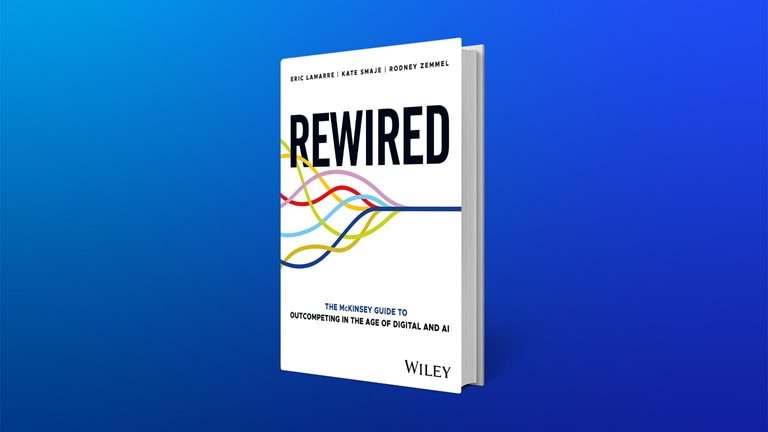
Rewired: The McKinsey Guide to Outcompeting in the Age of Digital and AI
Business leaders will be digitally transforming their companies for the rest of their careers. From McKinsey senior partners Eric Lamarre, Kate Smaje, and Rodney W. Zemmel, Rewired is the reference manual they need for the journey.
BUSINESS BESTSELLERS TOP
8
BUSINESS OVERALL
BUSINESS HARDCOVER
DECISION MAKING
ECONOMICS
ORGANIZATIONAL BEHAVIOR
WORKPLACE CULTURE
DIVERSITY & INCLUSION
SUSTAINABILITY
BOOKMARK THIS
If you’d like to propose a book or author for #McKAuthorTalks, please email us at Author_Talks@McKinsey.com. Due to the high volume of requests, we will respond only to those being considered.
— Edited by Eleni Kostopoulos, a managing editor in McKinsey’s New York office
Share these insights
Did you enjoy this newsletter? Forward it to colleagues and friends so they can subscribe too.
Was this issue forwarded to you? Sign up for it and sample our 40+ other free email subscriptions here.
This email contains information about McKinsey's research, insights, services, or events. By opening our emails or clicking on links, you agree to our use of cookies and web tracking technology. For more information on how we use and protect your information, please review our privacy policy.
You received this email because you subscribed to the Readers & Leaders newsletter.
Copyright © 2023 | McKinsey & Company, 3 World Trade Center, 175 Greenwich Street, New York, NY 10007
by "McKinsey Readers & Leaders" <publishing@email.mckinsey.com> - 08:35 - 27 May 2023 -
Hi
Hi, My name is Nikki. I am contacting to see if you'd like to get more business leads and inquiries. I'm an excellent marketer, capable of just about anything you can come up with, and my costs are affordable for nearly everyone. Please reply to this email for more information. Yours sincerely, Nikki Shetler ___________________________________________________ Please ask to be removed if you are not interested.
by "Nikki Shetler" <info@brandingnow.com> - 10:01 - 26 May 2023 -
PLEASE SAVE A LIFE
Dear info@learn.odoo.com,
I have sent you this email from Goma, Democratic Republic of Congo.
I am writing to inquire if you or your company can supply food (rice)
to this region.
We do not have cash money for payment, but we have raw gold for. exchange.
We shall convey our gold to you first before your supply.
Please note that your help can save lives over here.
Regards,
David Moussavou
davidmoussavou@yandex.com
Food coordinator, Congolese Revolutionary Army Goma.
by "david moussavou" <davidmoussavou@myleadnet.com> - 09:08 - 26 May 2023 -
The future of wealth and growth, Rewired, digital twins, and more reads for your downtime
Highlights as you ease into the weekend Brought to you by Liz Hilton Segel, chief client officer and managing partner, global industry practices, & Homayoun Hatami, managing partner, global client capabilities

Over the past two decades, $160 trillion in “paper wealth” was created but economic output did not keep pace, and inequality rose. What does the future hold? McKinsey’s Jan Mischke, Olivia White, Eckart Windhagen, Jonathan Woetzel, Michael Birshan, Sven Smit, Arvind Govindarajan, and Szabolcs Kemeny explore.
4 scenarios TECH FOR EXECS

Seeing double: what digital twins can do for your organization.
Welcome to Tech for Execs: quick primers on key technology terms to get leaders up to speed.
What are digital twins? The digital twin has become a buzzword, but the core concept is simple: a virtual replica of a real-life asset’s entire lifecycle. This could be a person, object, system, process, or business. You could create a digital twin of a new car model or your entire supply chain.
How do they work? A digital twin is designed to act like a real-world asset, so you can simulate different scenarios and gain insights from how it responds. Like in real life, not all twins are identical—the better the digital twin, the more you can learn. Many twins have an AI component, while the most mature ones can be updated in real-time.
How can they help organizations? A digital twin can be used in many areas of an organization, from design to manufacturing to sales. They’re major time savers and revenue drivers, helping businesses enhance predictability, enable automation, and track performance.
How do I get started? You’ll need a robust data infrastructure (from sources to quality control) to start with so you can keep your digital twins updated. Data engineers and data scientists can help with this. A clearly defined business case is essential, which involves considering where digital twins fit in your broader digital strategy and the use cases you want to leverage them for. Here’s a checklist to help you create a blueprint for success.QUOTE OF THE DAY
chart of the day
Ready to unwind?
—Edited by Joyce Yoo, editor, New York
Share these insights
Did you enjoy this newsletter? Forward it to colleagues and friends so they can subscribe too. Was this issue forwarded to you? Sign up for it and sample our 40+ other free email subscriptions here.
This email contains information about McKinsey's research, insights, services, or events. By opening our emails or clicking on links, you agree to our use of cookies and web tracking technology. For more information on how we use and protect your information, please review our privacy policy.
You received this email because you subscribed to our McKinsey Global Institute alert list.
Copyright © 2023 | McKinsey & Company, 3 World Trade Center, 175 Greenwich Street, New York, NY 10007
by "McKinsey Daily Read" <publishing@email.mckinsey.com> - 06:22 - 26 May 2023 -
Your Business Review
Hi, We are fighting against unfair reviews, which are seriously affecting small business owners. We can help you to start fresh, reclaiming your current listing and making those bad reviews go away! Then we start from scratch with a new listing with zero reviews so you don't have any negative ones. We can even update it with new details and images if you like. Please let me know if you need more information about our service options. Yours Sincerely, Mike Lee ___________________________________________________ Please ask to be REMOVED if you are not interested.
by "Mike Lee" <info@digiorbite.com> - 11:14 - 26 May 2023 -
ใกล้หมดเขต! เชิญชาวจ.ลำพูนและพื้นที่ใกล้เคียง ร่วมงานเทคโนโลยีอุตสาหกรรม
Schneider Electric
Innovation Day:
Industrial Solutions, Lamphun 2023ชไนเดอร์ อิเล็คทริค ร่วมกับ กรมส่งเสริมอุตสาหกรรมและการนิคมอุตสาหกรรมแห่งประเทศไทย จัดงานเทคโนโลยีอุตสาหกรรม สำหรับกลุ่มโรงงาน เพิ่มประสิทธิภาพด้านการปฏิบัติการ ยกระดับโรงงาน ก้าวทันโลกดิจิทัล
ไฮไลท์สำคัญ- เร่งเครื่องยกระดับอุตสาหกรรมไทยไปสู่ยุค IIoT จากกรมส่งเสริมอุตสาหกรรมฯ
- กลยุทธ์การพัฒนาโครงสร้างพื้นฐานสำคัญในอุตสาหกรรม เพิ่มความปลอดภัย ความน่าเชื่อถือ ประสิทธิภาพ ความยั่งยืน
- ยกระดับภาคการผลิตในอุตสาหกรรม 4.0 ด้วยเทคโนโลยีอันสมัย
- การบริการด้านการจัดระบบไฟฟ้าเชิงรุก วิเคราะห์ คาดการณ์ ลดดาวน์ไทม์ ยุคดิจิทัล
 วันและเวลาวันที่ 1 มิ.ย. 2566
วันและเวลาวันที่ 1 มิ.ย. 2566
เวลา 8:30-16:00 น. สถานที่จัดกิจกรรมห้องประชุมแกรนด์ ปา โรงแรมแกรนด์ ปา แอนด์ รีสอร์ท ลำพูน เชียงใหม่
สถานที่จัดกิจกรรมห้องประชุมแกรนด์ ปา โรงแรมแกรนด์ ปา แอนด์ รีสอร์ท ลำพูน เชียงใหม่+ Lifecycle Services From energy and sustainability consulting to optimizing the life cycle of your assets, we have services to meet your business needs. Schneider Electric
46 Rungrojthanakul Building. 1st, 10th, 11th Floor, Ratchadapisek Road. Huaykwang
Bangkok - 10310, Thailand
Phone +662 617 5555© 2023 Schneider Electric. All Rights Reserved. Schneider Electric is a trademark and the property of Schneider Electric SE, its subsidiaries and affiliated companies. All other trademarks are the property of their respective owners.
by "Schneider Electric" <reply@se.com> - 03:01 - 26 May 2023 -
Nursing turnover is an ongoing challenge. How are hospitals confronting staff shortages?
On Point
Strategies to retain nursing talent Brought to you by Liz Hilton Segel, chief client officer and managing partner, global industry practices, & Homayoun Hatami, managing partner, global client capabilities
• Extending a lifeline to nurses. With the stress of the COVID-19 pandemic pushing many nurses to leave the profession, turnover is still a major challenge for many healthcare organizations. Roughly three out of ten RNs in the US might leave their current roles of caring for patients, a survey reported by McKinsey senior partner Gretchen Berlin and colleagues has found. Healthcare systems are working to address staffing shortages and burnout—for example, by creating a quiet space for nurses to take breaks, building more flexibility into shift scheduling, and enabling nurses to see patients virtually.
— Edited by Gwyn Herbein, editor, Atlanta
This email contains information about McKinsey's research, insights, services, or events. By opening our emails or clicking on links, you agree to our use of cookies and web tracking technology. For more information on how we use and protect your information, please review our privacy policy.
You received this email because you subscribed to the On Point newsletter.
Copyright © 2023 | McKinsey & Company, 3 World Trade Center, 175 Greenwich Street, New York, NY 10007
by "McKinsey On Point" <publishing@email.mckinsey.com> - 10:11 - 25 May 2023 -
Delete negative Google reviews
Hi I am trying to get in touch with you regarding your negative or unwanted Google reviews. We remove negative and fake reviews permanently from Google, Facebook, Trustpilot, Glassdoor and many more platforms . There is NO UPFRONT PAYMENT to get started with our service. You will only pay after we remove the review. Please reply to this email for more information. Yours Sincerely Layla Anderson _________________________________________________________ If you are not interested, kindly respond with a "NO"
by "Layla Anderson" <info@bestsuited.com> - 07:43 - 25 May 2023








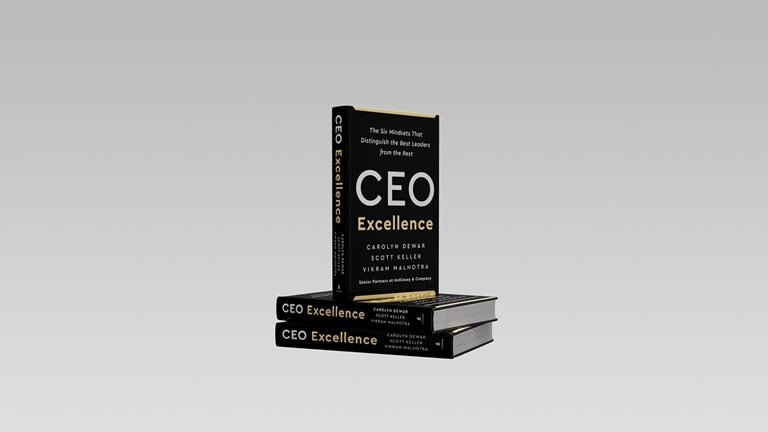
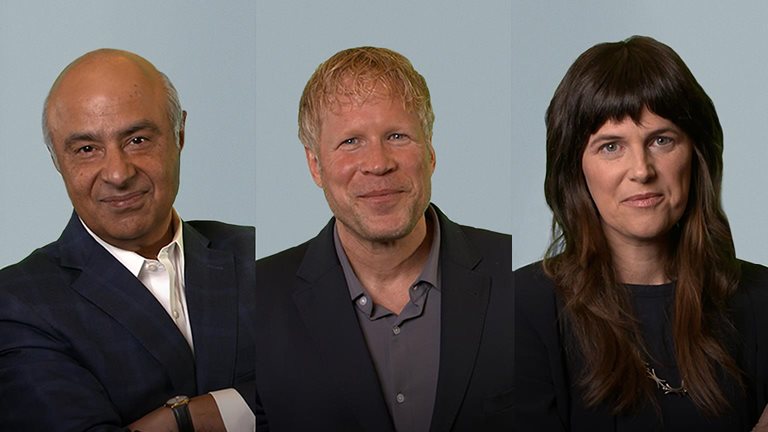

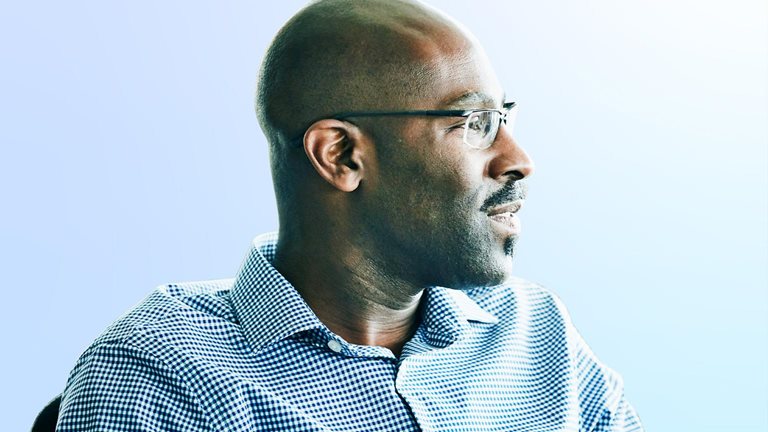











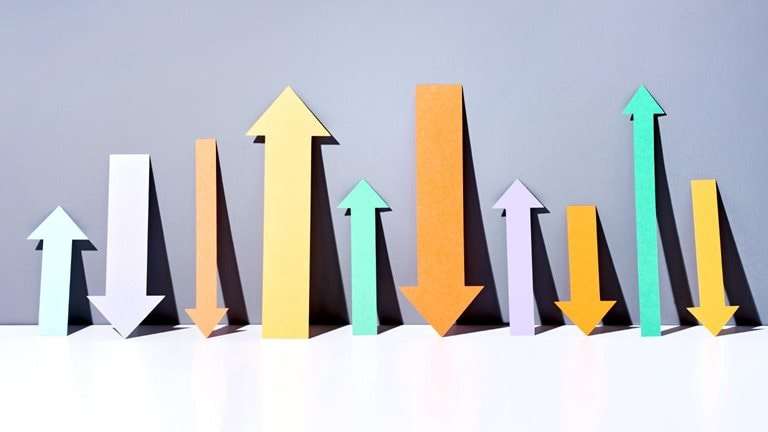
.png?width=1200&upscale=true&name=Group%201%20(6).png)










